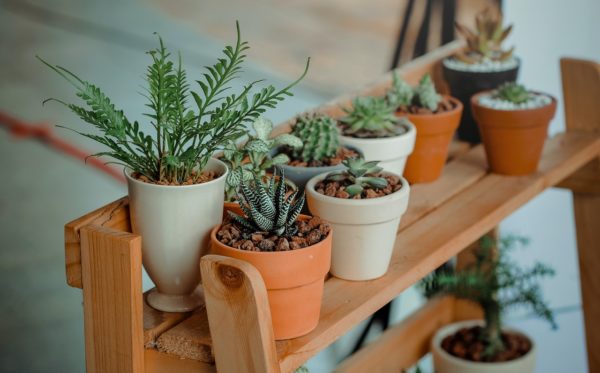Each of your household plants grow at their own speed. Snake plants grow slow and steady, while your ivy may need to be repotted each spring. Learning the language of your household plants includes understanding when to repot. So, welcome to springtime and take note of your plant’s language; it may be time to upgrade their space.
Five Signs it’s Time to Repot:
- Root-bound
- Roots coming out of the bottom or top
- Yellow leaves
- Loss of leaves
- Stagnation of growth
The growth of your household plants continues based on the nutrients available, and repotting your plant gives your green some new and fitting nutrients. In varying times your plant will outgrow their containers, so depending on the plant, you may need to repot each spring or every 2 to 5 years. The plant’s roots are likely to be the first to indicate a need for more nutrients. This could be shown in roots extending past the bottom of the pot, or the roots may take the shape of your container, making the plant “root-bound”.
A root-bound plant is identified by the roots encircling the top or bottom of your pot, showing the roots need more room to grow. Additionally, the plant could be asking for a larger living space, if its roots are coming out of the bottom of the pot. The best way to check, each spring get your hands a little dirty and gently investigate the interior of your pot.
The roots aren’t the only source the plant may use to show its needs. The leaves of a plant turning yellow can indicate overwatering or a lack of nutrients, or maybe both. If the leaves of your plant are dying off frequently, or the plant isn’t growing any new leaves (or stems dependent on the plant) the plant could be craving more nutrients. The leaves or flowers can’t grow if the plant is overcrowding its living space. The combination of yellowing, or loss of leaves and over-grown roots are strong indicators it’s time to move.
What’s Next?
- Repot and Re-soil
- Trim and Refresh
There are two options this spring if your plant has outgrown its space. First, you can repot and continue the growth of your household plant, verifying with a safe source the type of soil or fertilizer your plant needs moving forward. In contrast, if you’re happy with the size, there is still work to be done so plants can live in your ideal sized pot. Learning the language of your household plants includes understanding when to repot. If the goal is to grow, change its size. If you want to maintain, trim and refresh. The best time to repot is Spring, so before the season is over make sure you’re doing what’s best for your potted plants.
Fast Facts in Repotting
- Your Ivy plants need to be repotted every 1 to 3 years
- The household snake plants need to be repotted every 3 to 10 years
- Succulents need a repot every two years
- Spring is the best time to repot (or trim)




